Spondon - Nothing Happened
w/e 05 November 2017
All of this week's pictures were
taken with a Kodak DX6490
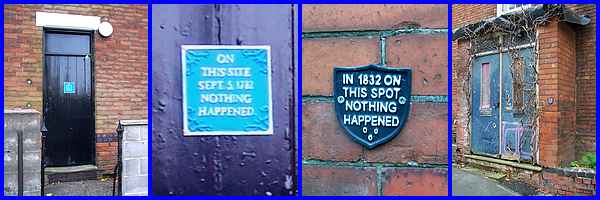
If you believe the signs on doors in Spondon Village, nothing
happened on September 3rd in 1732 and again in 1832 the same
non-event took place but at a different location.
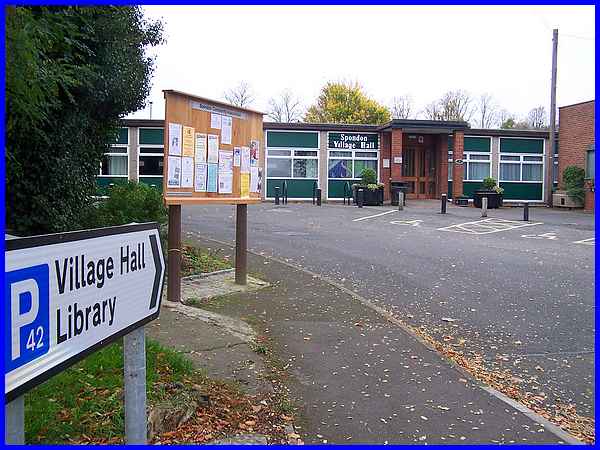
In all the years I have been touring the area, I must have driven
through or been a bus passenger passing over the same roads numerous
times but images of the village have never featured on this site.
At a loss this week of anywhere else to go and with time pressing,
we pulled onto the car park at Spondon Village Hall.
|
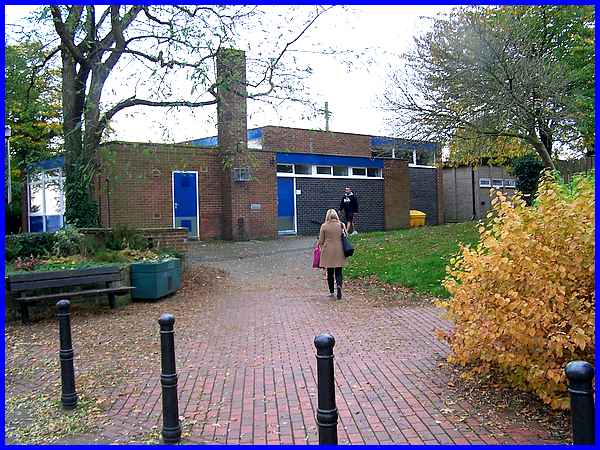
The Library stands next to the Village Hall.
|
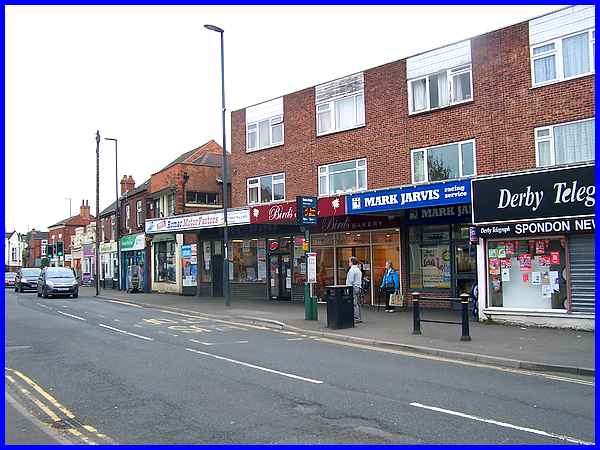
I am as guilty as the next man for driving through Sitwell Street
passing all these shops without giving them a second glance on
the way into Derby. At one time Spondon was a village in its
own right but now it has been swallowed up by the city of Derby
and is only about four miles from the city centre.
|
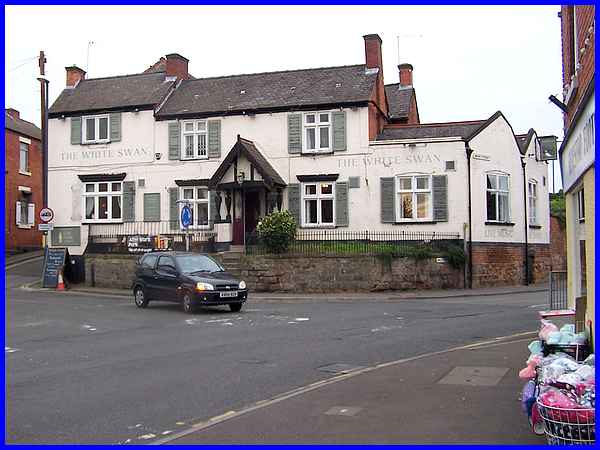
The White Swan on the corner of Chapel Street (on the left) and
Moor Street (right) at the end of Sitwell Street is another familiar
landmark usually seen on the return journey from Derby. The original
pub on this site just called The Swan is thought to date from
about 1774.
|
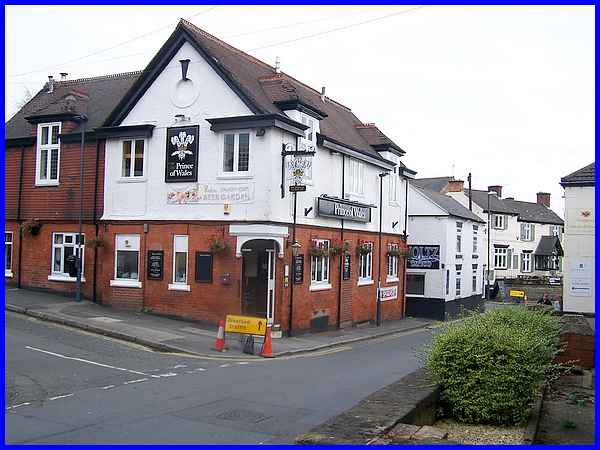
Turning into Chapel Street leads to a less familiar area and
only a few yards from the White Swan seen here on the right,
is the Prince of Wales - another old pub with a history dating
back to 1720.
|
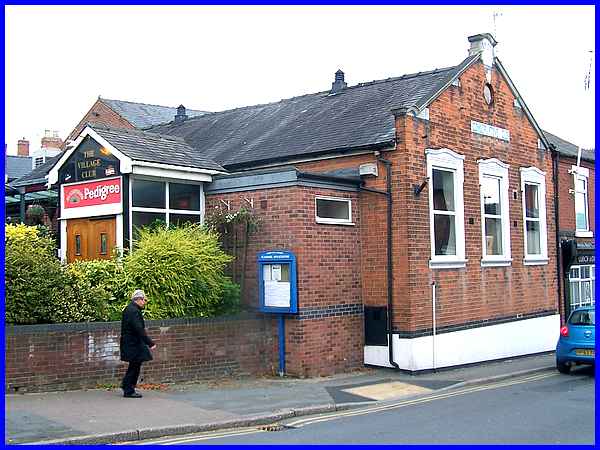
The Village Club also on Chapel Street near to The Prince of
Wales was formed in the late 1800s as the Spondon Conservative
Club. In the present it now offers many facilities and hosts
various events and the building housing the Village Club is inscribed
with the date 1907 on the chimney stack.
|
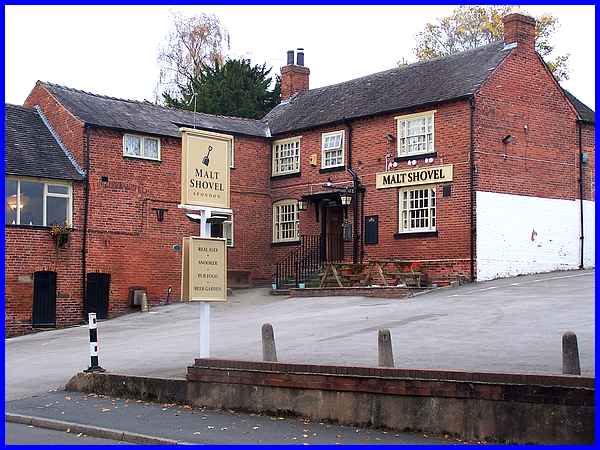
 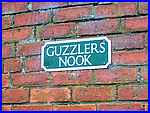 We walked
round from Chapel Street into Potter Street via Hall Dyke, location
of one of the "nothing happened" signs. In Potter Street
the Malt Shovel stands on the site of the old malting house.
It has been rebuilt twice but parts of the inn, which dates mainly
from the late 18th or early 19th century, date back to 1680.
Across from the inn is an alley (left) called Guzzlers Nook (right)
but whether this is a comment of the patrons of the inn is purely
supposition on my part! We walked
round from Chapel Street into Potter Street via Hall Dyke, location
of one of the "nothing happened" signs. In Potter Street
the Malt Shovel stands on the site of the old malting house.
It has been rebuilt twice but parts of the inn, which dates mainly
from the late 18th or early 19th century, date back to 1680.
Across from the inn is an alley (left) called Guzzlers Nook (right)
but whether this is a comment of the patrons of the inn is purely
supposition on my part!
|
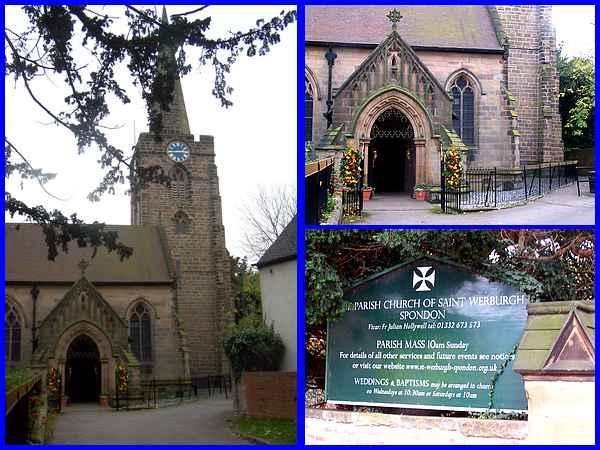
Standing opposite the end of Potter Street is Saint Werburgh's
Church. The church was built in 1390 and its spire visible from
all around stands 114 foot (35m) high.
|
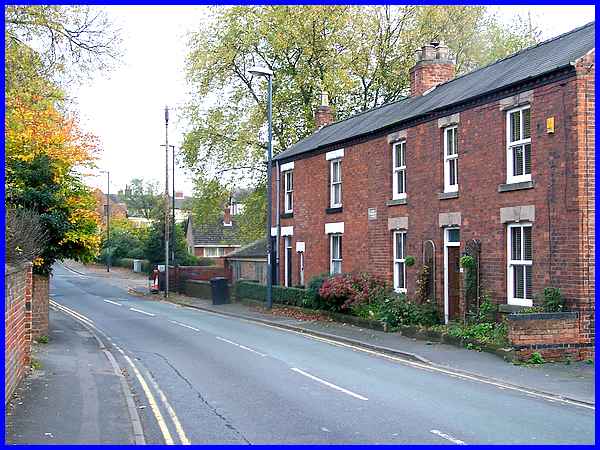
Turning left at the end of Potter Street and walking just a few
yards down Lodge Lane North returned us to Sitwell Street at
the opposite end to The White Swan. As we headed back to the
village centre we passed a terrace of cottages bearing the initials
R.J.D. the name Strand Villas and the date A.D 1884. No mention
though of whether anything happened or not.
|
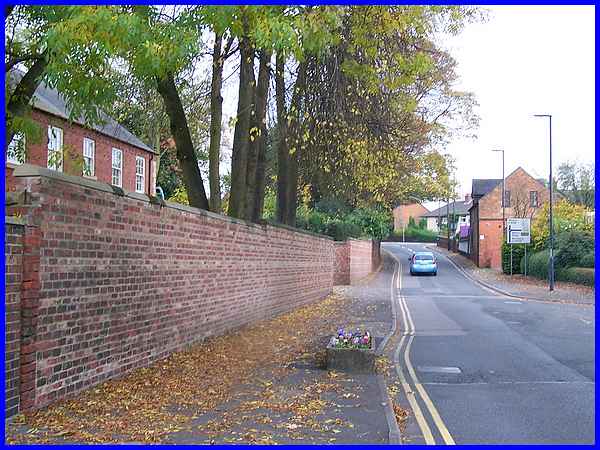
An old trough at the side of the road now serves as a flower
bed and the high wall looks as though it has been pointed up
since its original build. In fact the wall around St Werburgh's
Church is currently undergoing some restoration work so I think
we're safe to assume those "nothing happened" signs
in Spondon are no longer true.
Something that actually did happen in Spondon in 1856 was the
unsolved murder of Enoch Stone which is mentioned in a work of
fiction by Edward Marston called "Timetable of Death"
one of his "Railway Detective" series. In the preface
to the story set in 1859, he writes that he has had to "bend
certain facts to make them fit into the narrative" but the
action takes place in and around Spondon and is an easy to read,
enjoyable detective tale. Read more about the book at the Historical Novel Society.
|

